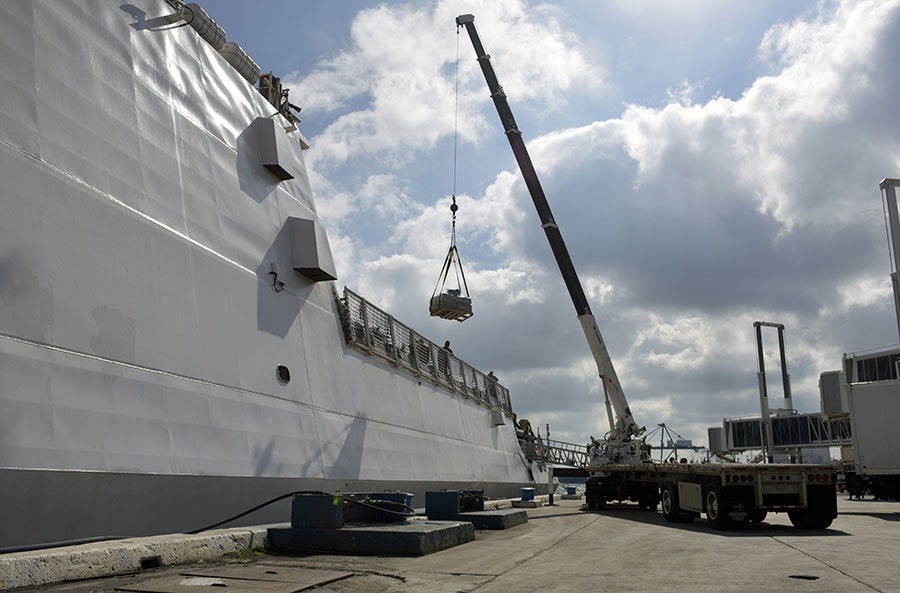On Thursday, the U.S. Coast Guard offloaded 26.5 tons of cocaine seized in 27 separate interdictions in international waters off the Eastern Pacific Ocean. The cocaine was offloaded in Fort Lauderdale, Fla.
The drugs were interdicted by Coast Guard and Royal Canadian Navy ships sailing with embarked Coast Guard Law Enforcement Detachment (LEDET) teams aboard. The cocaine is estimated to be worth an estimated $715 million wholesale, the Coast Guard said.

A view of approximately 26.5 tons of cocaine aboard Coast Guard Cutter Hamilton Dec. 15, 2016 at Port Everglades Cruiseport in Fort Lauderdale, Fla. USCG photo.
Six Coast Guard cutters and two Canadian Navy ships were responsible for the 27 interdictions and five bale seizures since Oct. 1 that made up Thursday's offload.
- The 418' Coast Guard Cutter Hamilton was responsible for 11 cases, seizing an estimated 10.3 tons of cocaine.
- The 378' cutter Mellon was responsible for seven seizures and two bale recoveries for an estimated 5.5 tons of cocaine.
- The 270' cutter Forward was responsible for one seizure for an estimated 1.7 tons of cocaine.
- The 210' cutter Dependable was responsible for four seizures for an estimated 2.8 tons of cocaine.
- The 210' cutter Active was responsible for one bale recovery operation for an estimated 2.2 tons of cocaine.
- The 210' cutter Dauntless was responsible for three seizures for an estimated 3.4 tons of cocaine.
- The Royal Canadian Ship HMCS Edmonton and a Coast Guard LEDET were responsible for two seizures and one bale recovery operation for an estimated 1,500 pounds of cocaine.
- The Royal Canadian Ship HMCS Brendon and a Coast Guard LEDET were responsible for one bale recovery operation for an estimated 1,540 pounds of cocaine.
“This not only showcases the threat posed by dangerous cartels, gangs and criminal groups that make up extensive transitional organized crime networks, but it also highlights the commitment of the Coast Guard and its interagency partner’s efforts to detect, interdict, investigate and prosecute operatives for these criminal networks,” said Vice Adm. Karl Schultz, commander, U.S. Coast Guard Atlantic Area.
“Hamilton’s cargo this morning represents the combined efforts of the multi-national coalition, led by the US Coast Guard, which is working to stem the tide of the narcotics trade in the Caribbean Basin,” said Commodore Craig Baines, commander, Royal Canadian Naval Atlantic Fleet. “It is a tangible example of our collective efforts to keep narcotics off our streets while at the same time promoting regional security.”

Members of the Coast Guard Cutter Hamilton crew stand next to approximately 26.5 tons of cocaine Dec. 15, 2016, aboard the cutter at Port Everglades Cruiseport in Fort Lauderdale, Fla. USCG photo.




